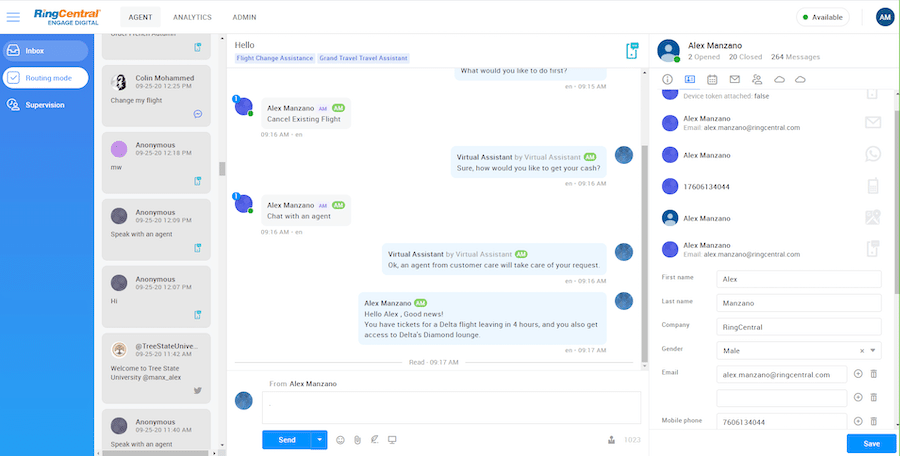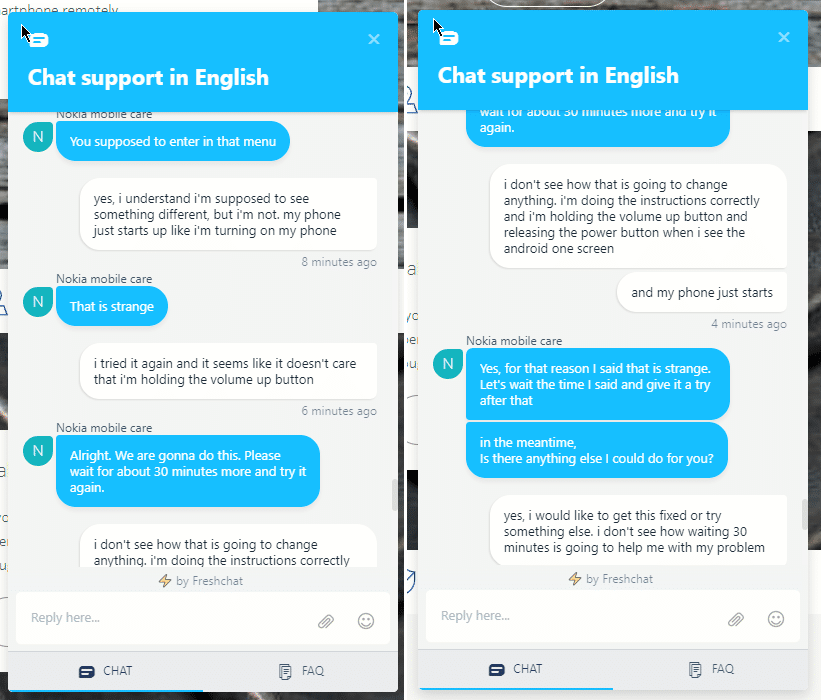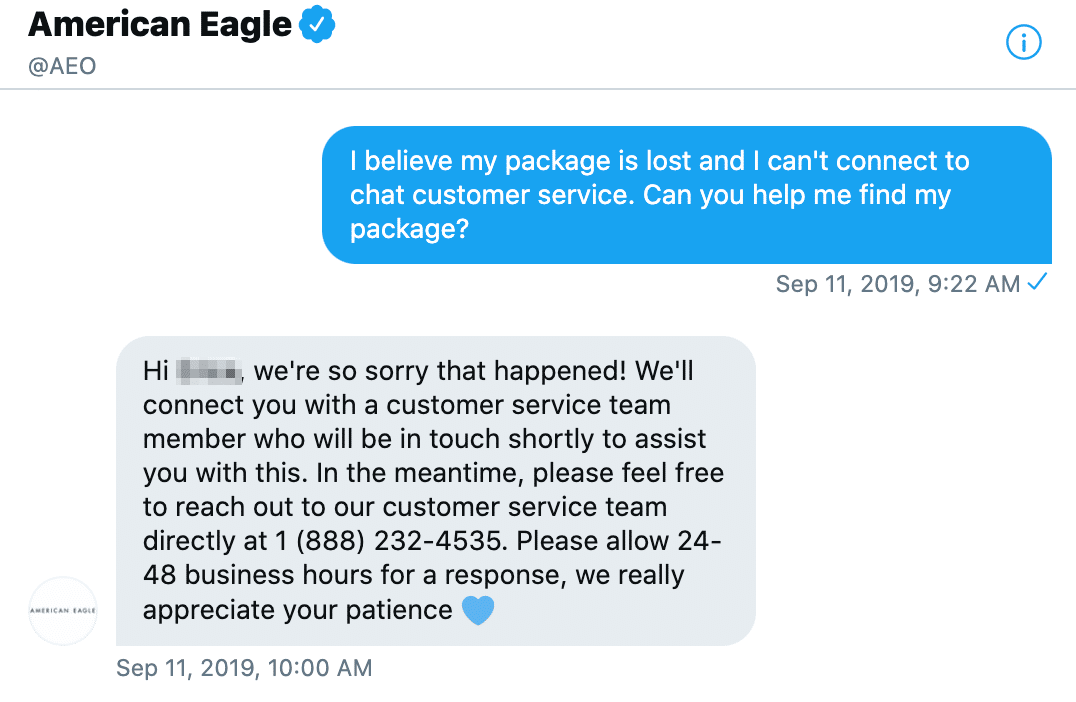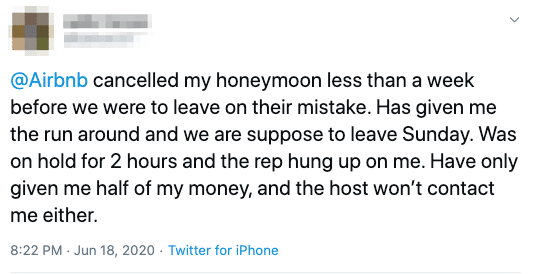Think back to a time you had a bad experience with a brand. Maybe they lost your order, or a representative was rude to you when you asked for help. Or maybe they just never responded to your question at all.
Do you have a moment in mind?
It probably didn’t take you too long to come up with a time you experienced bad customer service. Those memories can be easy to recall because, well, they stick.
According to a study from the Association for Psychological Science, we’re more likely to remember bad experiences over the good1—meaning that one bad customer service story has the potential to undo all your good work and outweigh any positive service received before or after.
Now, think back to how you felt about that brand after your negative customer service experience.
Were you reluctant to buy from them again? Did you consider switching over to a competitor? Or maybe you actually took that step and moved on to something new. Maybe you took it a step further to tell your friends and family about the awful experience you had, warning them to stay away.
Unfortunately for businesses, this isn’t uncommon—and it’s costing them. In 2018, poor customer service cost businesses more than $75 billion a year2.
So, what can you do to prevent bad customer service? Read on to find out:
⭐️⭐️⭐️⭐️⭐️ Ready to offer 5-star customer service? Get strategies for every stage of the customer journey with this free eBook.
What is “poor customer service?”
Poor customer service happens anytime your business fails to meet a customer’s expectations. It could be the quality of service your customer received, how long it takes for you to answer their phone call, or just their overall experience with your brand.
We often think of bad customer service as just being rude to customers or ignoring their requests. While these certainly are instances of bad service, sometimes negative experiences come from something as simple—and as easily preventable—as a poorly implemented customer service software or a customer service strategy that wasn’t properly thought through.
Here are just some of the side effects of consistently bad customer service over time:
- Your reputation is damaged
- Leads don’t convert
- Customers move their business to a competitor
- Unhappy customers tell friends and family about their negative experience
- You lose money
But what does poor customer service look like? Let’s explore some examples from real companies.
5 examples of bad customer service
Bad customer service can take many forms. Here are five of the most common examples—and tips on how you can avoid them while retaining more customers.
1. Not having an omnichannel communications strategy
The list of platforms that customers are using to ask questions, issue complaints, or ask for help is growing every day. From traditional customer service channels, like phone calls and email, to “newer” platforms, like social media, there is no one-size-fits-all approach to customer service.
When a customer wants to get in touch with your business, they’ll do so on the platform of their choosing—whatever is most convenient for them.
But if your service reps aren’t managing those platforms and looking for questions or concerns regularly, a customers’ needs could go ignored. By the time you see their message, they’ve already moved on to a competitor. That’s why omnichannel customer service is so important. For the perfect solution, get in touch with RingCentral to find out more about its business phone number.
How to avoid this pitfall and provide good customer service
Just having a customer service phone line isn’t going to cut it. But rather than hopping between Facebook messages and Twitter DMs while managing email overload, you could just consolidate all of these messages into one contact center platform. For instance, RingCentral Engage Digital’s dashboard gathers all your conversations across Facebook, Twitter, Instagram, email, and more in one place:

It also lets you connect with customers on their channel of choice, allowing you to see every past message for a customer, whether it was on email, a phone call, or social media. Not only does this speed up your response time, it also allows different people on your team to pick up on a conversation smoothly—even if they’ve never spoken to that customer before. Here’s a quick look at how it works:
2. Unhelpful chat
Live chat has been a great addition to customer service strategies. It makes it easy for the customer to connect with you, they don’t have to deal with long hold times, and you can efficiently respond to multiple customers at once. Can’t do that on the phone.
But too often, chat service agents aren’t equipped to handle more complex customer support questions. They give cookie-cutter solutions that don’t always work, and get caught up when the customer can’t find a solution—leaving everyone frustrated.
Here’s an example from Nokia:

Rather than trying to help the customer solve their problem, they insist they wait 30 minutes, hoping it resolves itself (or the customer’s issue will be another agent’s problem).
Half an hour later, you’ve got an angry customer on your hands.
How to avoid this pitfall and provide good customer service
Chat issues tend to happen when companies use outsourced technical support teams that aren’t efficiently trained in the product they’re providing support for. They’re given guides to follow, but when the steps laid out for them don’t work, they’re not actually familiar enough with the material to be able to recommend an alternative.
You can avoid this by supporting your team with virtual training sessions and equipping them with a contact center solution with features like live chat:
RingCentral’s Live Chat feature allows you to add a chat feature to your website and route messages to relevant agents to respond to. Using AI, you can ensure each message lands in front of the right support agent who can then appropriately answer questions or address concerns.
Adding a solid knowledge base to your website can also help customers self-serve and find solutions on their own time, freeing up your team to respond to more complex questions—so you can have a smaller, more deeply trained staff of professionals waiting to help.
3. Transferring customers from agent to agent
Put yourself in this customer’s shoes:
You call a business you recently ordered from to check the status of your shipment. After waiting for five minutes, a support representative answers. You go through the steps of explaining your situation, answering their questions, and giving them personal information so they can help you out.
But they tell you they’re not the right person to talk to (after going through all this information, of course), and they’ll direct you to the right person.
They send you to another department, you repeat the same information, and yet again you’re told you’re not connected with the right person.
They transfer your call and the cycle continues.
You’re probably feeling frustrated just imagining this scenario. And you wouldn’t be alone. Not only is that just an awful example of failed customer service teamwork, a whopping 70% of respondents in our survey of consumers said that being transferred and having to repeat themselves is “very annoying,”—outranked only by having to wait too long on hold:
How to avoid this pitfall and provide good customer service
This problem usually has to do with how your customer support team is structured. If you have different teams focusing on different channels or new reps monitoring for customer concerns, you’re going to need to transfer customers around until they find the right support team.
This creates confusion for you—and frustration for customers.
Instead, make sure customers receive consistent responses across all channels without sacrificing quality of service by organizing your agent teams by skill set and making team knowledge easily accessible. When each team is equipped to respond on every channel, support agents trained in each specific area can answer questions or provide service regardless of where the customer is asking—meaning fewer transfers and less repetition.

4. A lack of empathy
When a customer comes to you confused or frustrated, the last thing they want to hear is corporate jargon from a customer support agent who sounds like they couldn’t care less about the stress the client is dealing with.
This is a pretty basic customer service skill, but it can be difficult to master. It isn’t just about “using positive language”—there are other nuances, like making the effort to personalize the conversation even though a lot of resolutions to customer service questions are scripted. Here are some of the issues that can arise from a lack of empathy in customer support agents:
- Tone mismatch that leaves the customer feeling unheard
- Customers feeling like their issue is being brushed off
- Delayed responses with generic apologies that do little to relieve customers’ stress
- Customers reluctant to reach out to customer support again in fear of another negative experience
How to avoid this pitfall and provide good customer service
Hiring empathetic team members needs to be the first step. If your customer service agents aren’t naturally empathetic, it can be more difficult for them to naturally apply it to support conversations with customers.
However, you can help train your team to use empathy and be mindful of how they use language. Empathy exercises can improve listening skills, understanding, and problem-solving.
One of the fundamental things you can do to show empathy in a conversation, other than listening and trying to understand what the customer needs, is to pepper in indications that you’re paying attention, such as “I completely understand…” and “I know where you’re coming from…” to show that you’re paying attention to and acknowledging what they’re saying.
Here’s an example from American Eagle Outfitters:

An informative, yet empathetic response, can go a long way in reducing frustration and creating a better environment to positively support the customer.
The message above is actually not even super personalized, but the addition of an emoji and well-placed exclamation point makes the tone more “human.” Adding these little elements can go a long way in creating positive experiences for the customer when using workflow automations.
5. Making customers wait too long
When a customer is stressed, confused, or frustrated, they’re probably anxious to find a solution to their problem. It doesn’t help if they have to wait for you to pick up the phone (learn more about first call resolution standards) or respond to their message.
By the time a customer finally gets to talk to a service representative, they’re already near their boiling point—creating a difficult situation for your team and making it harder to successfully resolve the problem.

And that is if the customer chooses to wait around at all.

If wait times get too long, they might hang up and immediately move their business to a competitor. And you don’t have a lot of time to waste—for 60% of customers, any wait time above 3 minutes is too long.
How to avoid this pitfall and provide good customer service
For the most part, long wait times are a sign that your customer service team is overwhelmed or understaffed. They might not have the right resources to do their job efficiently, or there are too many customer concerns and not enough service reps.
In order to make them as efficient as possible, you need to provide your team with the right customer service software and tools, such as a RingCentral virtual phone number.
Eliminating bad customer service is an ongoing battle
No business is perfect. When it comes to providing customer support, your team is almost guaranteed to have an “off” day.
But in order to consistently provide high-quality customer service to your customers, you need to have the right systems and processes in place so those “off” days are less often and less visible.
While these five examples and tips are a great place to start improving your customer support, bad customer service can creep into your support in a variety of ways. Be conscious of the service you’re providing your customers and look for opportunities to improve. Introduce call center quality assurance to monitor and improve your customer interactions. And remember how important customer feedback is, and how crucial being able to showcase positive customer reviews examples can be to the success of your business.
As you start to learn what works with your audience and what doesn’t, you can refine your customer service strategy to better eliminate bad support and make each customer connection positive. By exploring RingCentral’s virtual phone number for business option and looking into upgrading to a VoIP phone system, you’re heading in the right direction.
1 psychologicalscience.org/news/releases/new-study-suggests-we-remember-the-bad-times-better-than-the-good.html
2 forbes.com/sites/shephyken/2018/05/17/businesses-lose-75-billion-due-to-poor-customer-service/#6f257dcc16f9
Originally published Jul 01, 2020, updated Jul 24, 2024






